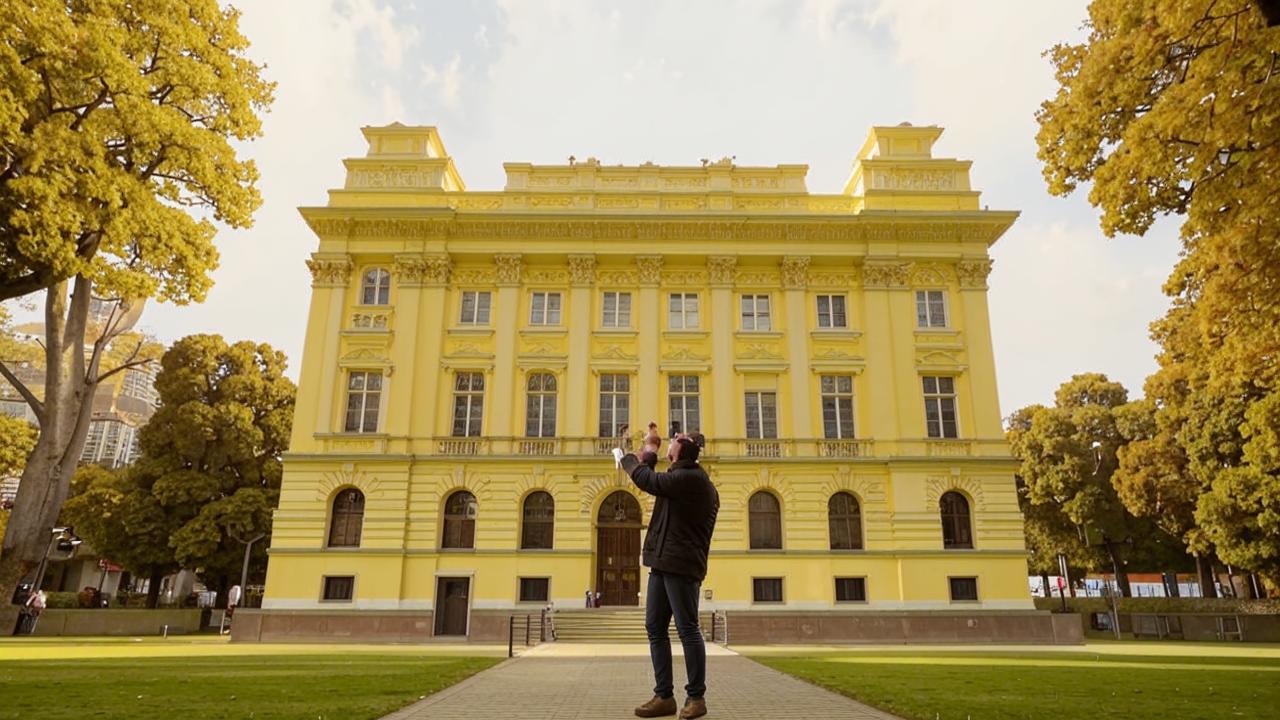Contrary to the stereotype, most tourists come to the cultural center precisely to walk, to enjoy European architecture and historical monuments. It is difficult to fit all the sights of St. Petersburg into one walking route for a day, because in order to go around the Hermitage alone and stay at each exhibit for a couple of minutes, you will need about 13 years. That’s why we took 11 places and the hypothesis that the best fitness is a walk, and the best walk is a trip. And here we are already on Nevsky, turn on our fitness tracker and set off to explore the center of St. Petersburg.
Starting point – Anichkov Bridge
Final point – Colonnade of St. Isaac’s Cathedral.
Anichkov Bridge
Historical note: the official name of the bridge “Nevsky” did not stick. The name “Anichkov” came from the name of Lieutenant-Colonel Engineer Mikhail Anichkov, whose working battalion rebuilt the nearby sloboda. He also took part in the construction of the bridge. The stories elevating the name of the bridge to some Anichka, or Ana, are just urban legends.
Lifehack: remember this place if you decide to take a ride around St. Petersburg on a river streetcar and look at the city from the water. This is where most of the tourist piers are located on the Fontanka River.
Nevsky Prospekt
Historical note: Nevsky Prospekt is undoubtedly the most important, the most historic artery of the city. Literally every house on Nevsky has its own legend; there are even separate guidebooks exclusively for this street. Nevsky is mentioned time and again in the works of Russian classics, and they would surely be glad to know that the current appearance of the great avenue is not defiled by almost any modern building. Independent travelers who have arrived in St. Petersburg for the first time should definitely start exploring the city from here: from Nevsky one way or another you can reach many of the city’s most famous sights.
Monument to Catherine II on Nevsky

Historical note: the monument to Catherine II is located on Ostrovsky Square, next to the Alexandrinsky Theater and the Public Library building. The idea to erect a monument to Catherine II first arose in the early years of her reign. However, the Empress herself was against it.
The reason for the realization of this idea was the 100th anniversary of her accession to the throne – in 1862. Then a competition was announced for the design of the monument, which initially wanted to install in Tsarskoye Selo, in the courtyard of the Tsarskoye Selo Palace. The winner of the competition was the sculptor Mikhail Mikeshin. He made a model of the monument to Catherine II in the rococo style, which received a medal of honor at the World Exhibition in London. According to the monument to Catherine, the square in front of the theater is popularly called “Catherine’s”, or simply “Katya’s garden”.
The best fitness is walking, and the best walk is traveling.
Summer cafe-veranda
St. Petersburg weather is very capricious and changeable. And if you are lucky enough to catch the elusive rays of sunshine in the Northern Capital – make the most of it: take a stroll around the city, stopping at summer verandas.
Our choice: refresh yourself with a cool non-alcoholic Baltika 0 beer during your walk, because there’s still a whole day ahead full of discoveries and new impressions.

Lifehack: turn off the bustling Nevsky and walk along the Griboyedov Canal embankment along the Kazan Cathedral. This stretch of about 200 m consists of summer verandas, cafes and cozy bars.
Kazan Cathedral

Historical note: Kazan Cathedral is one of the largest religious buildings in St. Petersburg. It was built in 1801-1811 on the place of a small and already dilapidated church.
Singer

Historical note: the building of the Singer House on the corner of Nevsky and Griboedov Canal is known to all Petersburgers and many guests of our city as the House of Books – a famous bookstore, one of the centers of cultural and intellectual life of the city.
Lifehack: you can buy the best postcards at the most democratic price here, and send them right across the street – in the post office near the Kazan Cathedral. And of course, don’t forget to go up to the second floor and admire the panoramic view of the cathedral and the bustling Nevsky.
The Savior on the Blood

Historical note: the Cathedral of the Savior on the Blood is one of the main sights of St. Petersburg. The cathedral was not designed for mass visitation. This influenced its interior decoration, which is amazingly beautiful. The mosaic collection of the cathedral is one of the largest in Europe.
Palace Square

Historical note: Palace Square is the main square of St. Petersburg, the architectural ensemble of which was formed in the second half of the XVIII – first half of the XIX century. The name of the square was given by the Winter Palace with its southern facade facing the square.
Lifehack: there are four obligatory angles for photos on Palace Square. Check if all of them are included in your photo gallery?
Winter Palace
Guards Corps
Alexander Column
General Staff building.
The Great Neva River

Historical note: conventionally the Neva River is divided into the Small and the Big Neva. The Big is the part of the river running from the Palace Bridge to the Neva Bay.
Lifehack: meet at the same place at 01:15 and watch the famous draw of bridges.
St. Isaac’s Cathedral

Historical information: the largest Orthodox church in St. Petersburg today and one of the highest domed structures in the world. The height of the cathedral is 101.5 meters and it can hold 12,000 people at a time. However, the architect Montferrand himself believed that the cathedral is designed for 7000 people, taking into account the lush skirts of ladies, each of whom needs at least 1 square meter of space.
Lifehack: the ideal place for selfies near St. Isaac’s Cathedral, contrary to all expectations, is on the opposite side of the main passage. Here you can sit down on a green lawn and capture even the dome of the cathedral in the frame.
Colonnade of St. Isaac’s Cathedral

It deserves special attention: it is the most famous observation platform of St. Petersburg. From the height of 43 meters you can see the Neva River and the central districts of the city. It is especially beautiful here on white nights – there is something mystical in this ghostly light. You can climb the colonnade only on foot on a spiral staircase.
250 steps up. An excursion and an exercise machine in one. Regular walking on the stairs will help to improve your health, strengthen the muscles of thighs, buttocks, calf muscles. Walking down and up stairs is as much exercise as exercising or jogging.
Historical note: the construction of the colonnade began in 1837, right after the dome was erected. The temple was built according to the technologies of the early XIX century, granite monolithic blocks were delivered from the Gulf of Finland, and a special mechanism was built to lift them to the height. Basically, the construction was carried out manually by serf laborers.
Lifehack: the price of the question is only 300 rubles, but if you have a student ID or additional documents confirming your rights to benefits, a ticket to the main observation deck of St. Petersburg will cost you much cheaper.
The length of the whole route – 7.5 km / 10,312 steps
Travel time – 3.5 hours
Calories burned – 1228 kCal





